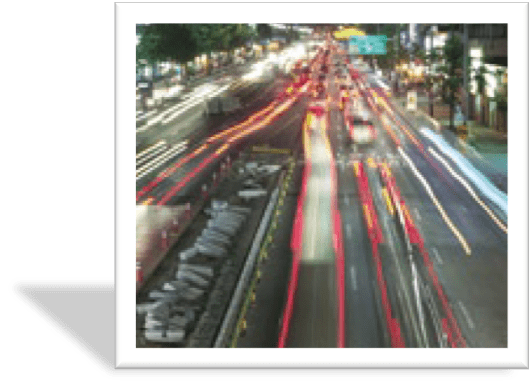
The latest IP cameras have much better video quality than the early analog CCTV cameras. Even though they both capture video, IP cameras do it dramatically better. The reason; they contain high performance digital processing computers. The computers provide reduced noise, improved wide dynamic range, reduced smearing, and enhanced low light performance.
This article reviews how these processors work and why they are important to the total IP camera system performance.
How Computers Improve the Video Quality
In the past, analog video cameras used low noise amplifiers and filtering circuits to improve the video image. The new IP cameras add special purpose digital signal processing computers that greatly improve the quality of the video.

Digital signal processing uses frame buffering and sometimes complex Fourier transforms to improve image quality. The amount of computer power available, determines how much video improvement can be obtained. For example, the higher the resolution of the camera, the faster the processor needs to be. Today, video processors are fast enough to support cameras with up to 2 megapixel of resolution. IP camera manufacturers continue to increase the performance of their video processing computers. As the computers get faster they will be able to handle the higher resolution cameras, including the latest 4K IP (8 megapixel) cameras.
Improving Image Quality
Sony, Axis and Samsung have digital signal processors. For example, Sony has the IPELA Engine system, which provides a number of separate functions such as View-DR™, that enhances the wide dynamic range of the camera, and XDNR™ technology that reduces noise.
The latest IP cameras from Samsung include powerful signal processing that improve the image quality. They call this “Samsung Super Noise Reduction” (SSNR). The image processing is achieved by buffering a frame of video and then comparing groups of pixels. Using special digital processes, which they call “Adaptive Temporal Infinite Impulse Response Filter”, Samsung is able to smooth out the noise in the image. This also greatly reduces the smearing that can occur when objects are moving at night. Their “Motion Edge Adaptive 2D filter” process, detects the edges of objects and reduces smear.
Here is an example of the image noise reduction achieved:


Why this is important? Clearer images not only allow us to see things better at night, they also reduce the amount of video storage required. When it’s dark, the low light video includes a lot of noise. This noisy video can’t be compressed effectively, so it uses a lot more bandwidth than clean video. The higher the bandwidth the more storage is required. The processed video cleans up the noise so it uses almost one quarter of the storage when viewing low light scenes. Improved video greatly increases the effectiveness of your IP camera system.
Wide Dynamic Range
The dynamic range of a camera determines the range of light that can be seen. Some scenes can have bright sunlit areas as well as areas in dark shade. Wide dynamic range allows us to see everything. Digital processing has greatly increased the wide dynamic range (WDR) available. To increase WDR, the computers in the camera average a number of frames together (using slightly different amplification levels for each frame). The dark frames and the light frames are averaged to create one frame with greatly increased dynamic range. Wide dynamic range is increased from 40 dB to over 120 dB using digital processing.
Why this is important? WDR means that we can see scenes that have very dark areas as well as very bright areas. For example, the new cameras allow us to view a person inside a room that has a very bright window in the background. We are able to see not only the person’s face inside, but also the faces of the people outside the window in bright sunlight.
Image Processing
The special computer processors in the camera provide more than improved video images. They also provide many analytic functions. For example, Samsung currently offers the following analytics (specific analytics may vary by model):
- Appear/disappear
- Audio detection
- Auto tracking
- Counting
- Entering/exiting
- Face detection
- Heat mapping
- Intelligent motion detection
- Passing
- Tampering/scene change detection
Why are analytic functions important? These features are used to notify a security person when an alarm condition occurs. This means the security person doesn’t have to look at the video all the time. Your IP camera security system becomes much more powerful. It can actually reduce the number of security people required.
Summary
As you can see, IP cameras include some very powerful digital computers. They can improve the quality of the video as well as providing analytic functions that improve the functionality of the total IP camera system.
If you need help selecting the best IP camera or any of the other components that makes up the total IP camera system, please contact us. We can be reached at 1-800-431-1658 in the USA, and 914-944-3425 everywhere else, or just use our contact form.